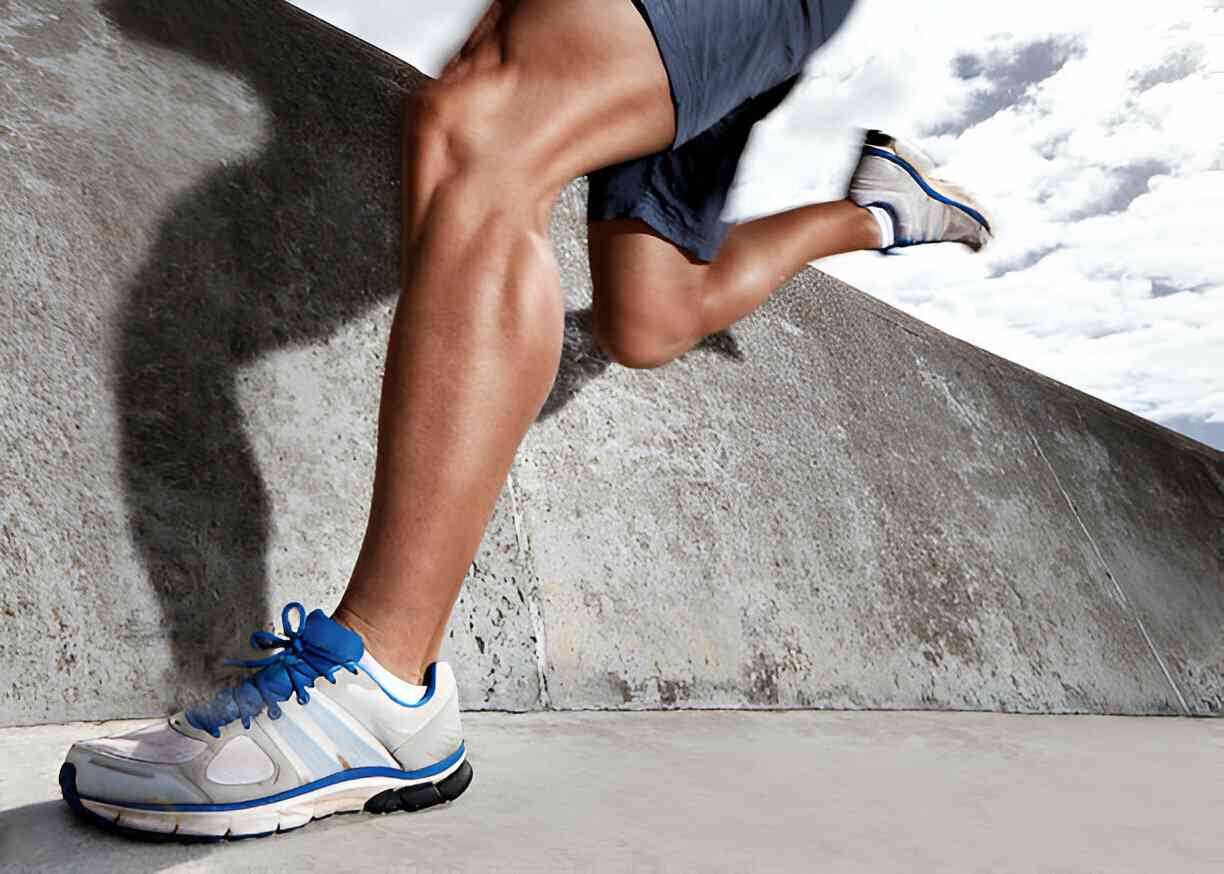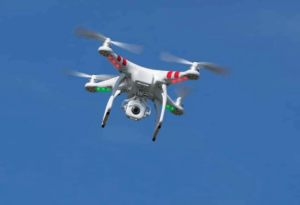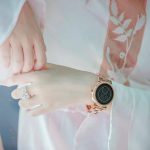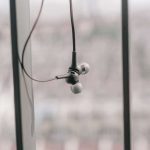Tired of going up and down rows upon rows of running shoes, confused about which one to choose? No wonder, with so many variations at your feet. Fear not! The following is a comprehensive guide to help you cut through the confusion in the world of running shoes and find that perfect pair that fits your needs. Everything from anatomy to shoes to how one does the silliest mistake while buying is covered here. From seasoned runners to fresh starters, this guide will walk you step by step through every necessary aspect of finding the best running shoes that match your unique foot shape, running style, and preference.
What You Need for Your Running
But before going into the quest for the perfect running shoes, there needs to be a little understanding about what your needs are in terms of running. It has to do with the evaluation of your running surface. You have to analyze your gait and running style. After that, you may want to think of personal preference. That way, you will be assured of a shoe that suits all your needs, providing you comfort, support, and performance to hit set targets for running.
Assess Your Running Surface
Some pound trail, others roads or a treadmill. The surface you run on plays a significant role in determining the type of shoe you must have. Trail runners need tread with more grip for rough terrain, while road runners need shoes with extra cushioning and support to help absorb repeated footstrikes.
Assessing Your Gait, Running Form
First and foremost, understanding how you run is crucial in guiding you on the right type of shoe. This foremost includes the elements to help in the evaluation of gait: the way the foot strikes the ground, stride length, and general posture during running. Do you overpronate or supinate? Do you have heavy heel striking, or are you more midfoot or forefoot striker?
Do this to understand your gait and running style better. Capture yourself from the side or back while you are running. Note any areas of problems in particular by examining the video. You could get feedback from a running coach or an experienced runner. You will, therefore, know what features you want in your running shoes. They help you with your running style and so you may need more cushioning for stability in your gait.
Anatomy of a Running Shoe
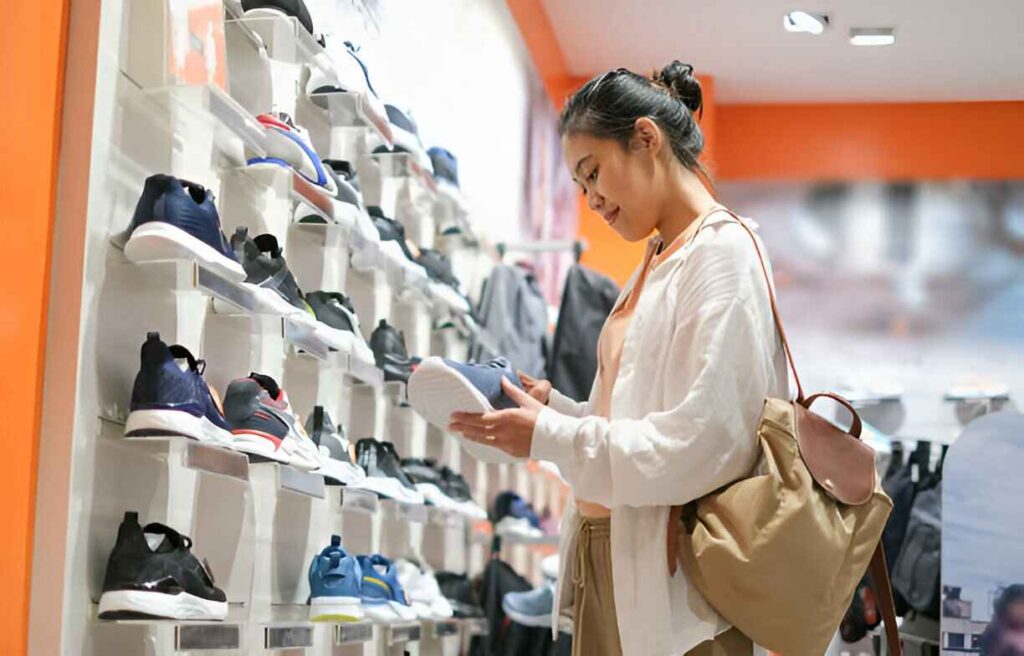
There’s more to a running shoe than meets the eye. Each part of the shoe has been made for a definite purpose to fit your foot a certain way, and even the slightest differentiation may affect your experience.
Upper Construction
If you’re looking for a comfortable fit, start with the upper construction. Traditionally, shoe brands crafted their uppers with layers of fabric and mesh sewn and glued together. Today, modern versions use knitting and 3D printing. They create seamless one-piece fits that stretch and support where needed. It should lay smooth wherever it touches – not binding, chafing, or bunching anywhere.
Ankle Collar and Heel Counter
If it is the support of the ankle that worries you, consider this: the ankle collar and heel counter. The ankle collar refers to the wrap at the top of the shoe opening that holds the heel down in place. Some shoes have thick padding; others rely more on the shape to cradle the ankle bone. The heel counter is a semi-rigid cup layered inside the rearfoot that cradles and supports your heel.
The ankle collar and heel counter must be substantial. It has been revealed that heel counters not work for motion control however they do center the heel thus promoting stable landings and support. Choose a heel which will permit comfortable ankle motion.
Saddle and Instep
Running shoes have an area that is reinforced around the instep. This is the arch of your foot between the ball and the ankle. In case you are hunting for a snug, sung fit, then pay attention to this area called the saddle. It assists in the interaction with the lacing to hold the shoe secure on the foot. Some designers use varying overlays and eyelets, and lacing systems to mold shoes closely to any shape of foot.
An excellent saddle ought to offer great fit and lock your foot down to give a secure feeling without any slipping sensation. It should also provide one with the natural arch doming during your stride.
Toebox and Forefoot
Consider the fit of your shoe—not to mention the toebox—it will cover all of the upper from the front of the eyelets to the last end of a shoe; then look for an extra-wide toebox that will have no interference whatsoever so that your forefoot is allowed to flex and spread out naturally in width and length.
You want to make sure you have a good toebox. It should not cramp or rub any part of your toes at all—not even your pinky toe. Ideally, you should be able to jiggle every single digit around in a shoe.
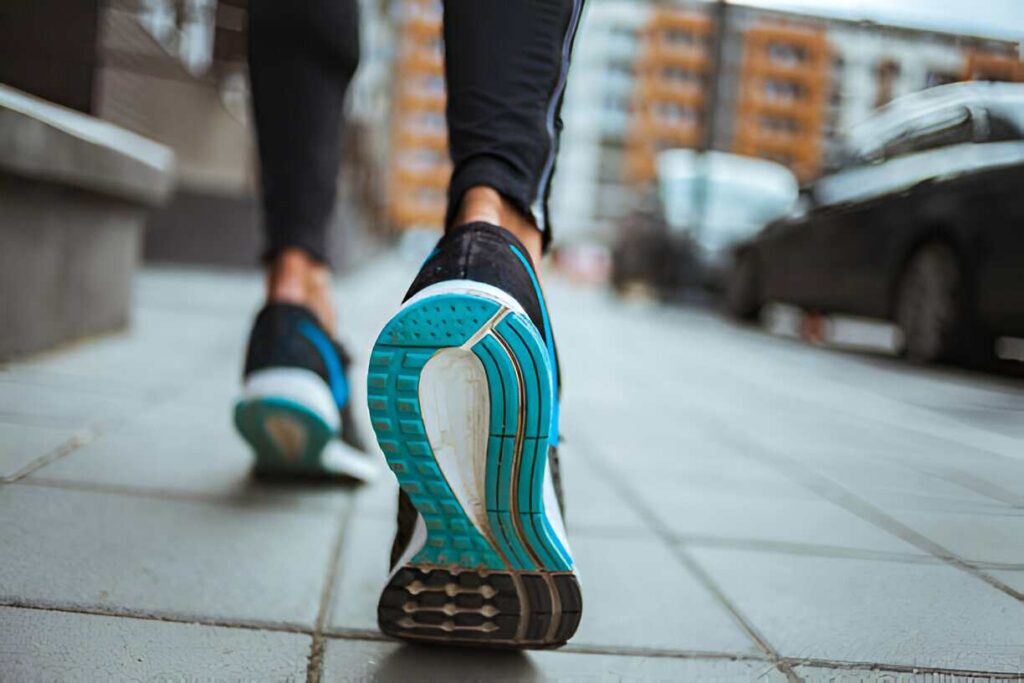
Midsole and Outsole Considerations
Now that you have considered the upper, turn your attention to the midsole and outsole. These are parts of the shoe that will yield cushioning, support, and traction for your runs.
Midsole Shape and Flexibility
Small details in many midsole shapes and flexibility can easily make a large difference in how it feels and performs. Look for flex grooves under the ball of the foot or toe spring/rocker patterns that let the foot roll naturally through the stride. The right amount of flex is going to depend on your running style and pace.
Heel and Forefoot Cushioning
You want some balance between the cushioning, stability, and feel of the ground. Heel cushioning should curtail the jolt from the heel strike. Cushioning on the forefoot softens the impacts of stride. Take notice during your test runs of how the shoe feels: Touchdown where you expect touch down, roll into the stride, and all that.
For example, some shoes feature a softer “crash pad” area on the outer edge of the foot or a rounded outer heel to smooth the landing. In fact, it has been shown that your body provides most of the cushioning for your joints. Therefore, heel cushioning is mostly about perceived comfort.
Heel-Toe Drop and Its Importance
This you can tell from the heel-toe drop, which is the difference in height between your heel and the ball of your foot when standing in the shoe. The right drop will depend on running style, pace, and personal preference.
Shape and size count for heel-toe drop, which is a good indicator of the type of ride one will have in those shoes. A lower drop helps in achieving a more natural stride, and a higher drop will offer more protection. Zero-drop shoes, say from Altra, put the heel and toe in the same distance to the ground. So finally, pick one that feels right during the stride from touchdown to toe-off with reduced stress on weak parts of your foot.
Factors to Consider When Choosing a Running Shoe
Not all running shoes are created equal, and what works for someone else doesn’t have to work for you. Many things have to be taken into consideration when choosing the right running shoe for your needs.
- Stability and support features
- Insole and arch support
- Customization options
- Heel-toe drop
- Midsole shape and material
- Heel and forefoot cushioning
- Running surface and outsole material
- Your gait and running style
These factors you shall not overlook, lest you suffer from discomfort, injury, or poor performance.
Several features of stability and support include medial posts, dual-density foams, varus wedges, guide rails, and broader shoe shapes. They allow giving stability and support to the foot. However, most the people typically do not need any kind of pronation support. The devices are supposed to support and not over-rule the natural movement.
Insole and Arch Support
Assuming that you’ve found a comfortable upper and good stability in your shoe, the next order of business is to see what kind of insole and arch support it has. Most of what people think of as “arch support” comes from the sock liner or insole.
The foot is dynamic, providing its support and cushioning. So, how it feels while you are running matters—softer is not always better. Wear your orthotic, if you have it, and check that it fits into your shoe comfortably.
In addition to geometry, which provides arch support, this mostly goes a long way in a shoe’s midsoles. Arch support with a good fit should be comfortable, reducing stress on the foot and ankle.
Customization Options
For runners who are looking for a better fit, several models could be customized. These range from removable insoles to adjustable lacing systems and even customizable midsoles that help get the best overall feel of the shoe for your needs.
Customizable midsoles and removable insoles are most welcome in this respect. They come most in handy for those runners who have some specific problem with their feet or ankles. These features would let one adjust the fitting and support of the shoe to reduce discomfort and improve performance.
Avoiding the Big Shoe-Buying Mistakes
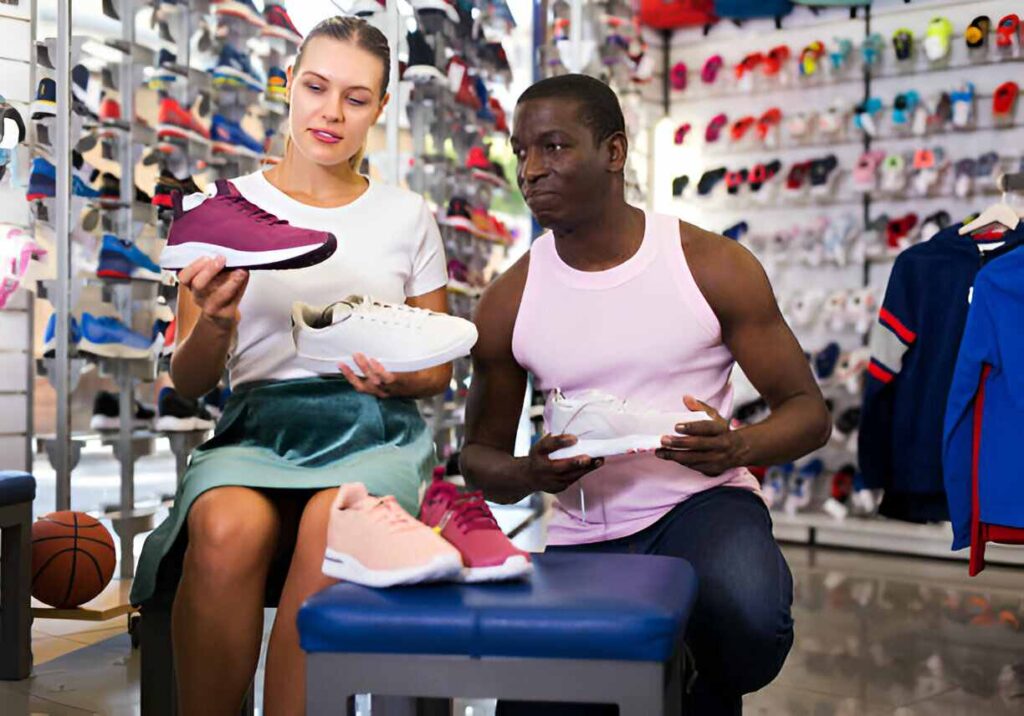
Now that you understand a little better what to look for in a running shoe, it’s time to discuss some common mistakes you can avoid with your purchase.
Mistake #1: Buying for Looks
Decisions for shoebuying should not be merely based on looks. Of course, one would want a nice-looking pair of shoes. But remember that even your running shoes serve a purpose: they support and protect your feet while running. Noted here is not to sacrifice comfort and fit for a stylish design.
Mistake #2: Not Trying Before Buying
The options are so numerous that one might end up buying shoes online or even without trying them. But Myfitness says it can lead to discomfort, blisters, and even injuries. Never buy shoes without trying them on and always run in your shoes to feel right in them.
Mistake #2 is especially crucial since it might explain your whole experience with running. In case you do not try before buying, you risk getting a pair of shoes that are either too small or too large, hence causing discomfort, pains, or even long-term injuries. Take time to have the shoes on, walk around, and take some short run to certify that they are the right ones.
Mistake #3: Not Checking Fit and Comfort
Otherwise, purchasing a shoe that is ill-fitting can be a disaster. Remember that your running shoes should feel more like part of your foot—not something tightening on it. Take notice of how the shoe fits—from heel to toebox, and see whether it will support and cushion.
The other common mistake is ignoring the importance of fit and comfort. Your running shoes should feel good the moment you slip into them. Not just after a “break-in” period. If a shoe feels uncomfortable or too confining, it’s best to go for another size or style. Your poor feet will appreciate that.
Tips for the Perfect Fit
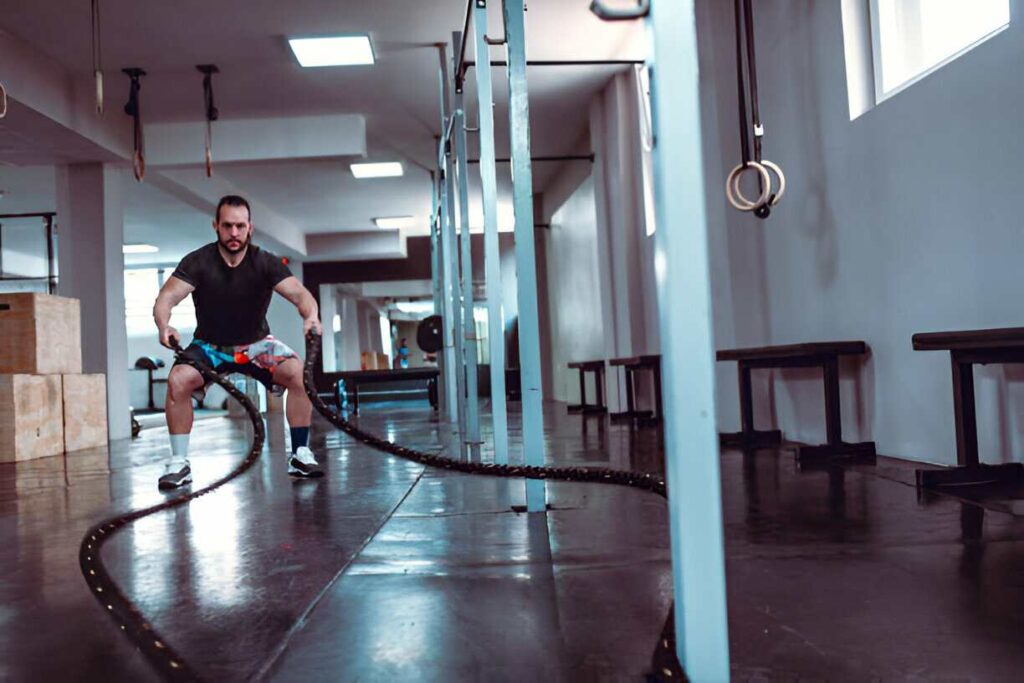
The perfect fit again is essential to comfort and enjoyment in your runs. Some tips to help you get a perfect fit are as follows: Try on several models and brands to compare the fit and feel. Wear the exact same type of socks you plan on running in. Walk or run around the store to make sure they feel comfortable and supportive.
- Notice the width and length—how it’s not too tight or too loose.
- Let your heel-to-toe drop be checked and have it be comfortable while striding.
- Perceiving the perfect fit is a personal experience, so take your time; do not rush the process.
How to Get an Extra 100 Miles Out of Your Shoes
Every runner must know that a good pair of shoes does make a difference. Follow these few more tips to get the most out of your running shoes: rotate regularly, store them in a cool and dry place, and clean them up after each use.
Know the Return and Exchange Policies
Nothing may be more frustrating than to buy a shoe that does not quite fit you. Know the retailer’s return and exchange policies prior to making your purchase.
An excellent return policy can facilitate peace of mind and allow one to try several shoes without fear of getting stuck with a given pair that doesn’t feel good on one’s feet. Look out for retailers who offer a risk-free trial period or even a no-hassle return process.
Our Favorite Shoes Right Now
Favorite running shoes vary depending on personal taste and running style. Here are some of our top picks:
This season, we can’t get enough of the Brooks Ghost 15 for its superior cushioning ability and extra support. If you’re looking for something a little more budget-friendly, try the Asics Gel-Cumulus 25. And if you’re into that minimalist scene, we love the Altra Lone Peak 7.
Conclusion
Recap: choosing the best running shoes requires careful consideration. You will have to factor in your surface, gait, and personal feelings in your choice. It can be attained by first knowing the anatomy of a shoe and by avoiding the mistakes. By trying different models, too. A perfect pair will give you comfort, support, and performance. Remember that looks must always take a backseat compared to your needs. Do not hesitate to ask the staff in running stores for guidance. Try on various insoles to make sure it fits you to a T. You will then find the perfect shoes with patience and persistence. They’ll take your runs to the next level.

